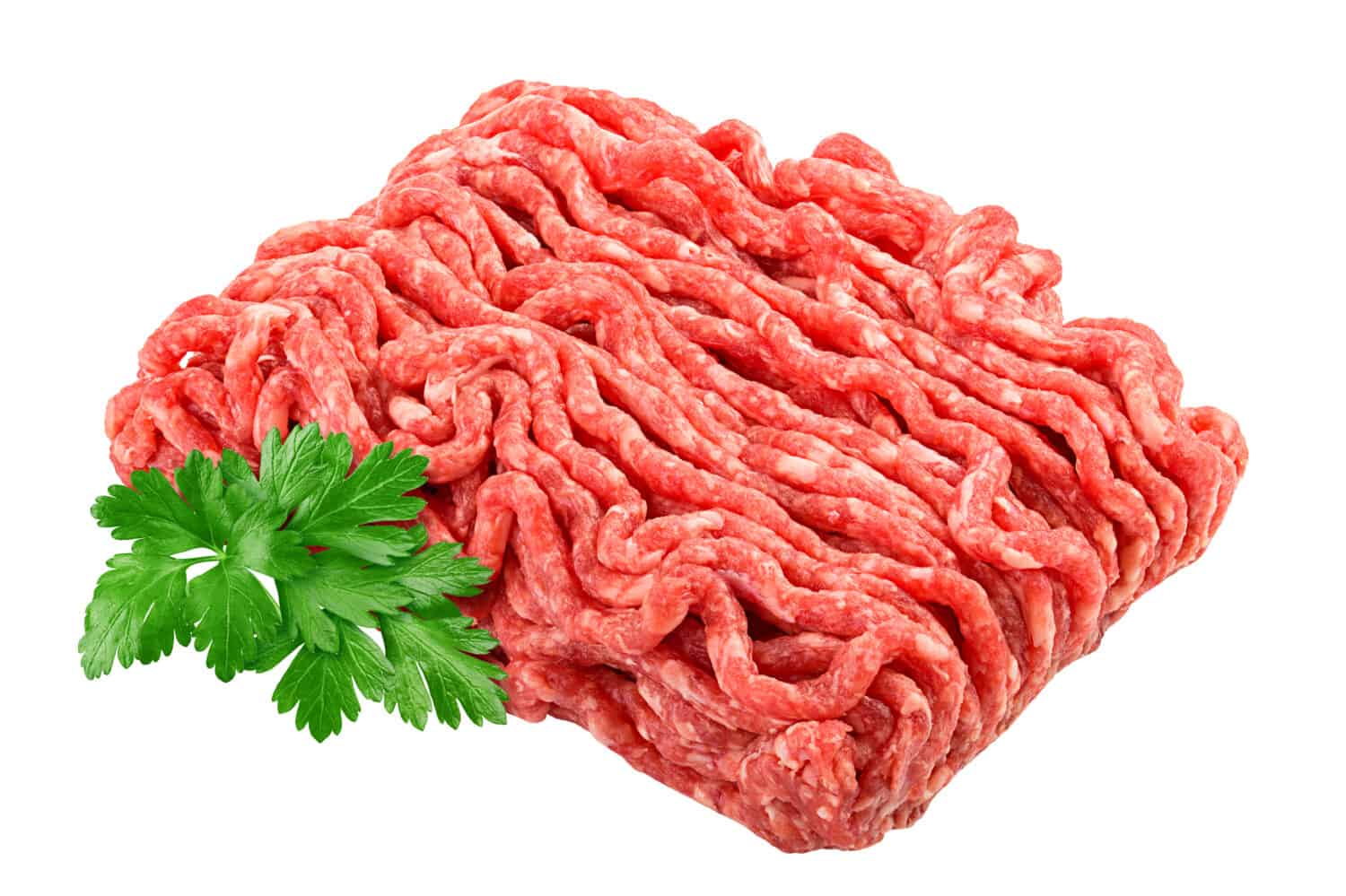Not all burgers are created equal.
Think about the last burger you ate. Was it tender? Juicy? Ground beef? Ground chuck?
That last question might stump you, and you might even think it’s a trick question. Ground beef and ground chuck both come from a cow, after all. But you’ll taste the difference between them, even if you never thought about it before. Which is better? Depends on the situation.
Let’s take a look at both options and then compare ground chuck vs. ground beef.
What is Ground Chuck?
Chuck is the shoulder of the cow. Basically, any meat taken from that section can be considered chuck. Why is it called chuck? The etymologists’ best guess is that “chuck” is a variation of “chock” which means “block.” Since the chuck cut of beef often takes the shape of a wedge or block, the name stuck.
Think about your own shoulders. You’ve got tons of muscles and tendons helping you to move them. It’s the same with cows. Chuck has tendons, fat, and more connective tissue running throughout it. When cooked, this can make a slab of meat tough and hard to cut through. That’s why it’s often ground up before it’s sold. People can then use it to mold into meatballs, hamburger patties, and other meats that will need to hold their shape while cooking. The higher fat content in ground chuck helps with making molded shapes stick together better.

©ltummy/Shutterstock.com
What is Ground Beef?
Ground beef is sort of a free-for-all! Ground chuck can actually be included in ground beef, but unlike ground chuck, it does not have to be made up exclusively of cuts from one area of the cow. Ground beef can come from anywhere on the cow.
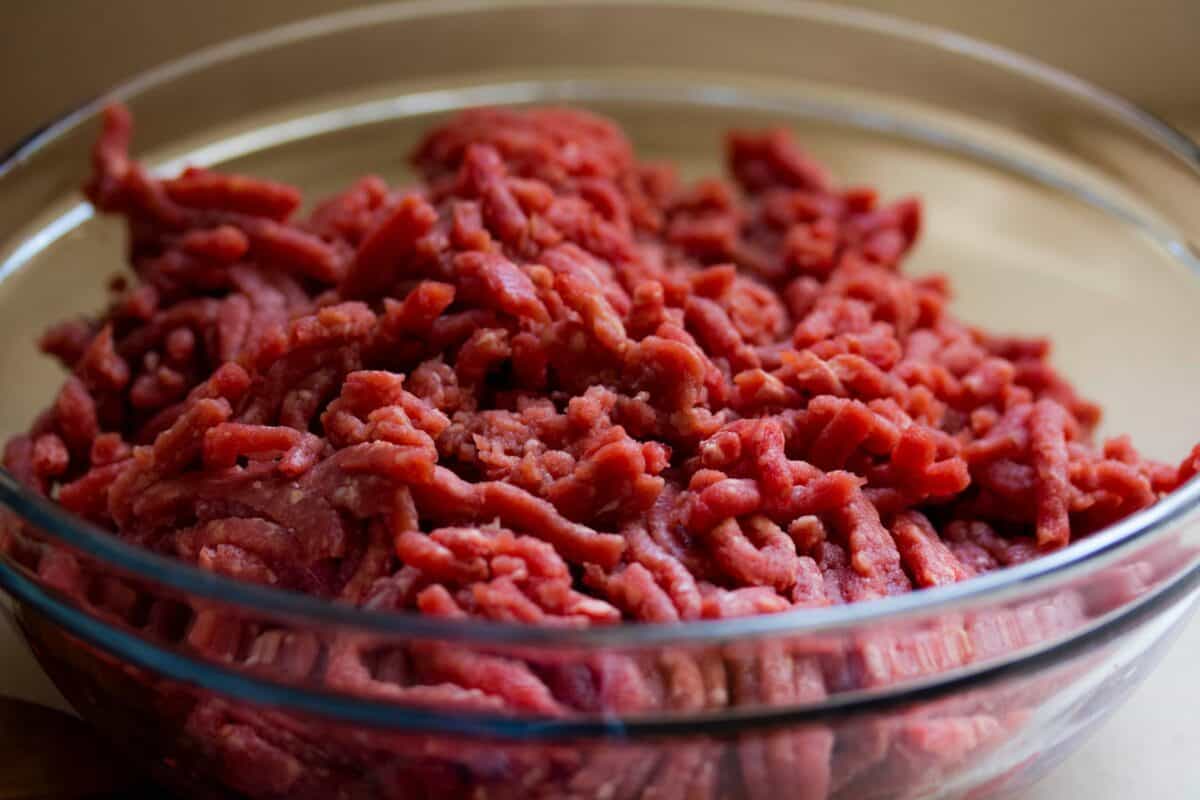
©Patricia Ferreira Santos/Shutterstock.com
Ground Chuck vs. Ground Beef
Now here comes the meat of this article (pun intended). What’s the difference between ground chuck and regular ground beef? There isn’t just one!
Differences in Nutritional Values
Probably the biggest difference with regard to ground chuck vs. ground beef is nutrition. The USDA sets standards that dictate that any kind of ground beef (ground chuck included ) cannot contain more than 30% fat and must be properly labeled. But the fat content definitely varies depending on what cuts are included.
Ground chuck is fattier than ground beef. One ounce of cooked ground chuck has five grams of fat, compared to one ounce of cooked ground beef, which has 3.3 grams of fat.
The protein counts are pretty similar. One ounce of cooked ground chuck has 7.2 grams of protein, whereas one ounce of ground beef has 7.4 grams of protein.
Who wins this round? Based purely on nutritional value, regular ground beef isn’t quite as fatty, which makes it the leaner option if you’re looking to cut calories. But remember, since ground beef has less fat, it doesn’t hold its shape quite as well. If you’re looking to make meatballs or ravioli, ground chuck might be the better bet.
Differences in Taste
It’s a truth universally acknowledged that the more fat a food contains, the tastier it is. Ground chuck abides by this rule. If you’re looking for a nice, juicy hamburger, you should probably choose ground chuck. Ground beef, the leaner option, will dry out faster, which is fine if you like your burgers well done. But for those in your family looking for that tender pink middle? You’re better off going with ground chuck.
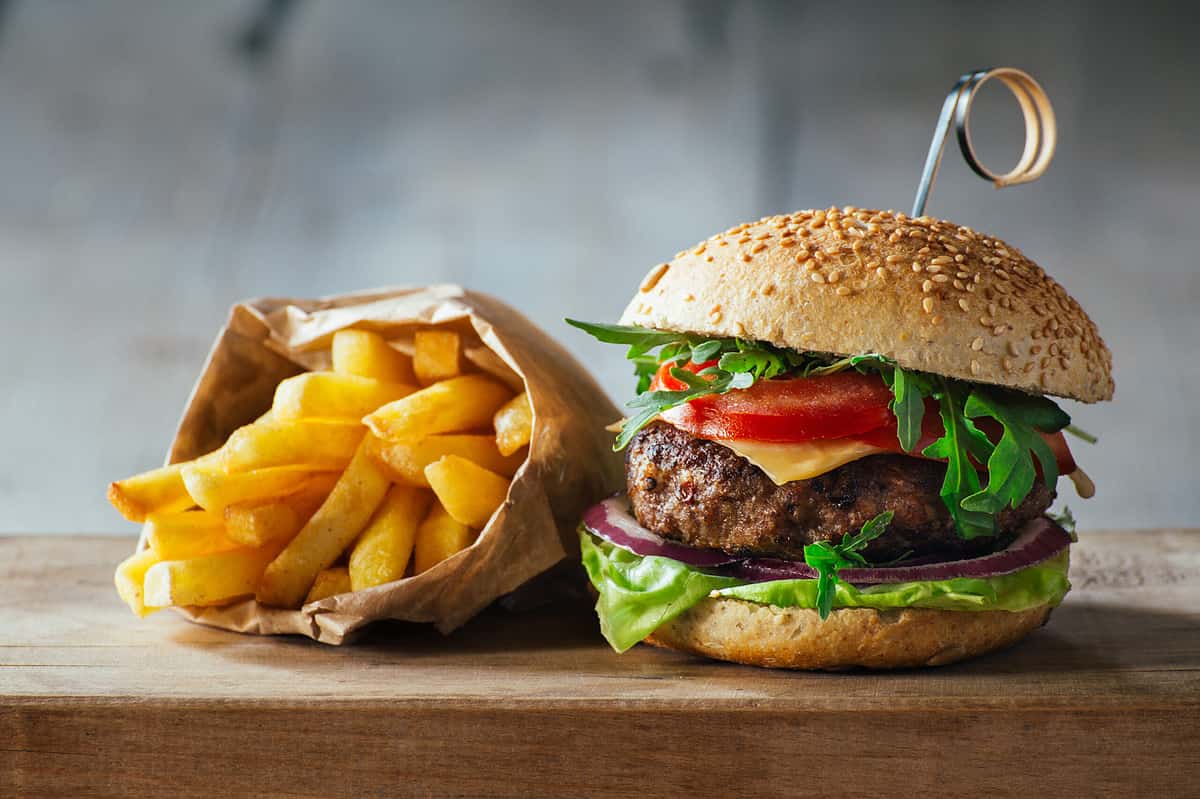
©Dejan Stanic Micko/Shutterstock.com
Ground beef is better if you plan on cooking something like bolognese or another dish where your sauce provides extra moisture. It won’t matter if the meat dries out a little, and you don’t need it to stick together. Ground beef can also hold seasoning pretty well, so it’s a great option if you’re going to make something like crunchy tacos.
Differences in Cost
Ground chuck tends to be more expensive than ground beef because it’s required to come from a specific section of the cow. At the same time, it has a pretty high fat content, which makes it more affordable than leaner meats.
Ground beef can come from anywhere on the cow, which means the quality can vary. However, it is leaner than ground chuck and can therefore sell at a higher price point. People watching their waistlines are always looking for sources of lean protein, something that will keep them full but not require them to eat too much.
When it comes to the cost difference regarding ground chuck vs. ground beef, it’s really a draw. Nutrition and flavor are the factors that will probably weigh more into your decision on what to buy.
What You Can Make With Ground Chuck
Hamburgers
The most popular thing to make with ground chuck is hamburger patties. Since ground chuck holds together well and doesn’t dry out as quickly, it makes the perfect burger. You can go simple with your toppings and choose from lettuce, tomato, onions, pickles, ketchup, mayo, and maybe some mustard. Or you can spice it up and add some caramelized onions, pickled jalapenos, chipotle mayo, or guac. Don’t forget the cheese!
You can also try our recipes for Habanero-Chili burgers or Bacon-Stuffed Hamburgers if you want to try something new. There’s also this Layered Hamburger Bake if you’d rather go bunless.
Patty Melts
Some people are partial to patty melts, which are like burgers, except with sliced bread instead of buns. For the classic patty melt, get a loaf of marbled rye and cook up some caramelized onions. Maybe add some mushrooms and Swiss cheese as a topping, too. Don’t knock it ‘til you try it!
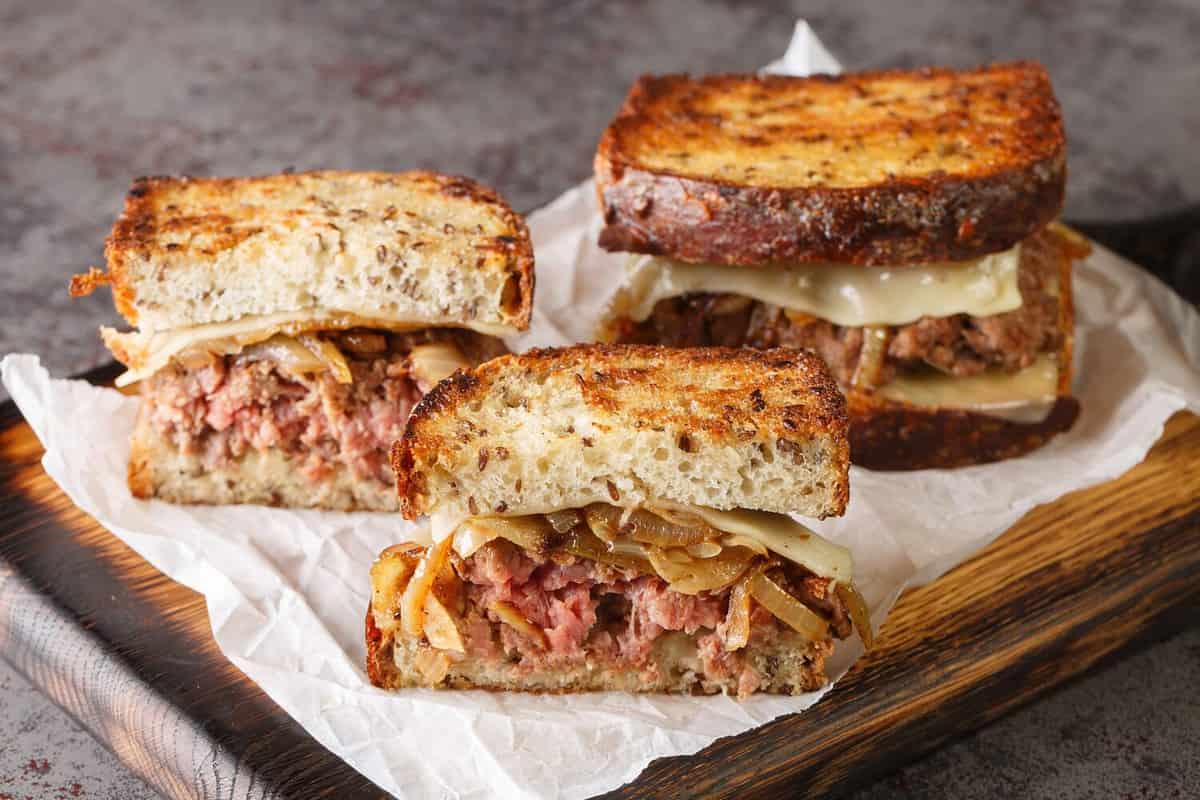
©AS Foodstudio/Shutterstock.com
Sliders
A favorite among kids or parents who want to feel like the kids they once were, sliders are a great option to have some fun with food. Make it a slider bar, where you can mix and match toppings on each of your slider patties.
Meatballs
You probably know about Italian meatballs, made with breadcrumbs, garlic, salt, pepper, and of course, your ground chuck. But what about Cheesy-Stuffed Meatballs? Or Sweet and Sour Meatballs? Try this recipe. You could also do a twist on a gyro and fill your pita with meatballs instead of gyro meat, then dress it all up in chopped cucumber, tomato, onion and tzatziki sauce. Yum.
Kabob Koobideh
A Persian specialty, this dish requires you to blend pureed or chopped onion with your ground chuck, then season your mix with salt and pepper. You should have some metal skewers on hand if you plan to make this dish. Before grilling your meat over charcoal, you’ll want to shape a quarter of your ground beef mix around the metal skewer carefully, lengthening it until it’s about 5-7 inches long. You’ll want to flip the kabobs while they cook so the meat cooks evenly!
What You Can Make With Ground Beef
Bolognese
Bolognese is a fancy name for red meat sauce. You don’t have to worry about the meat sticking together in this dish, because it’s all crumbled up in the sauce and mixed up with the pasta. Try this Classic Bolognese Lasagna recipe.
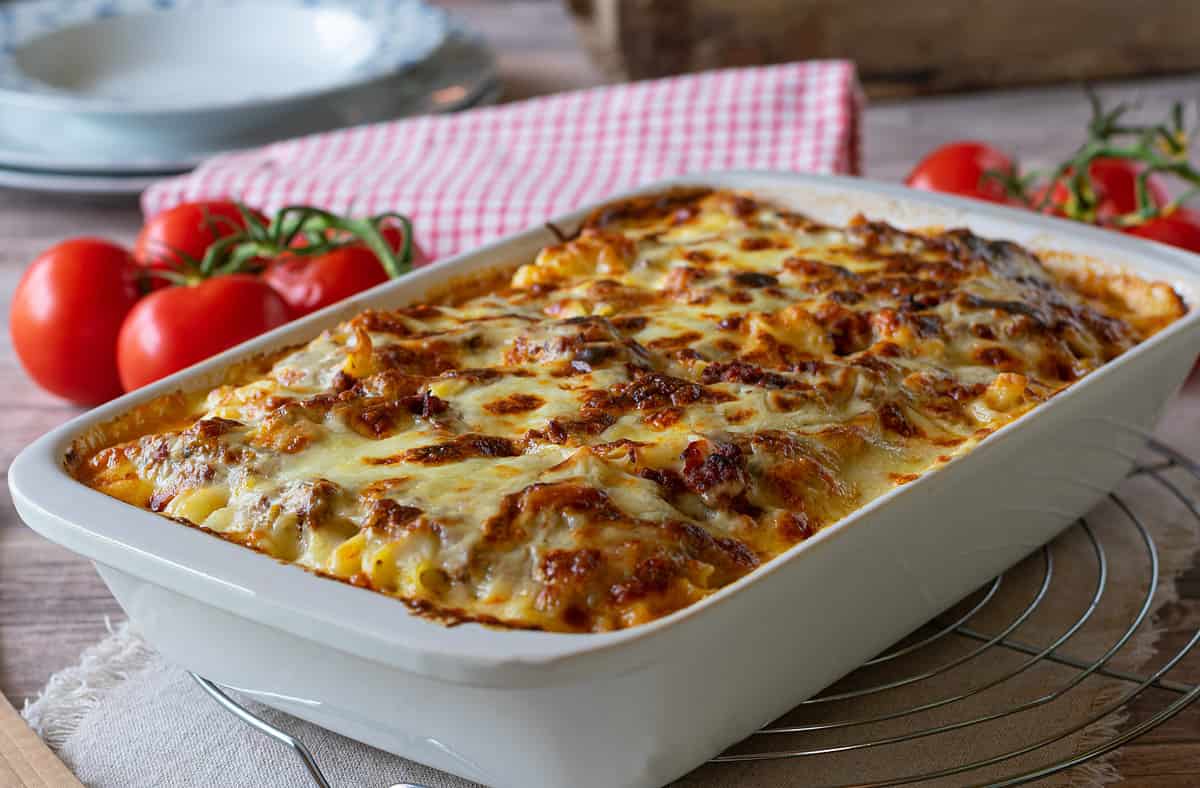
©iStock.com/Angelika Heine
Chili
Chili is the comfiest of comfort dishes and we’ve got tons of recipes for you to try. There’s Football Chili 8 Ways, Cheesy Baked Chili Mac Casserole, and Beefy Green Chili Enchilada Casserole, if you’re in the mood for a Tex-Mex spin on a classic.
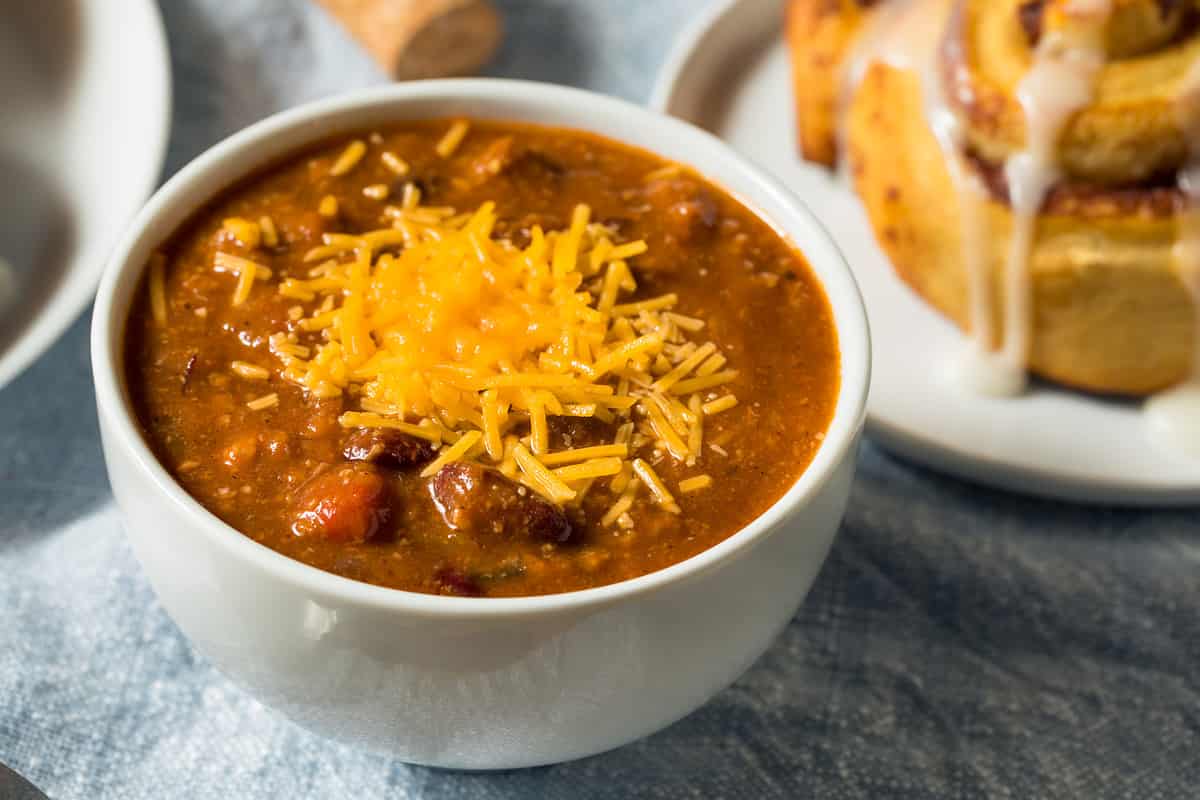
©iStock.com/bhofack2
Can You Substitute Ground Chuck with Ground Beef and Vice Versa?
You can definitely substitute ground chuck with ground beef, no problem. However, if you’re looking to make something like hamburger patties, meatballs, or kabobs and you only have ground beef on hand, you’ll probably need to add a binding agent. Some people use raw eggs, but you can also use mashed up black beans or another starchy legume to help your meat stick together.
How to Cook Ground Chuck or Ground Beef Safely
To ensure proper food safety, the USDA recommends refrigerating your ground beef at 40 °F (4.4 °C) or below and using it within two days. If you plan on freezing your ground chuck or ground beef, that’s fine, but it won’t retain its quality for much longer than four months in the freezer.
The safest way to thaw frozen ground beef and ensure no bacterial contamination is by thawing it in the fridge. Again, same as earlier, once thawed, you have two days to cook your beef and this time, you should not re-freeze any raw, thawed meat.
If you’re on a time crunch and need to thaw frozen beef more quickly, the USDA recommends putting the beef in a watertight plastic bag and submerging it in cold water. You change the water every 30 minutes until the meat is thawed.
As far as cooking temperatures, the USDA recommends cooking your meat to a minimum internal temperature of 160 °F (71.1 °C). Food thermometers are definitely useful to have on hand for this.
A Quick Comparison of Ground Chuck vs. Ground Beef
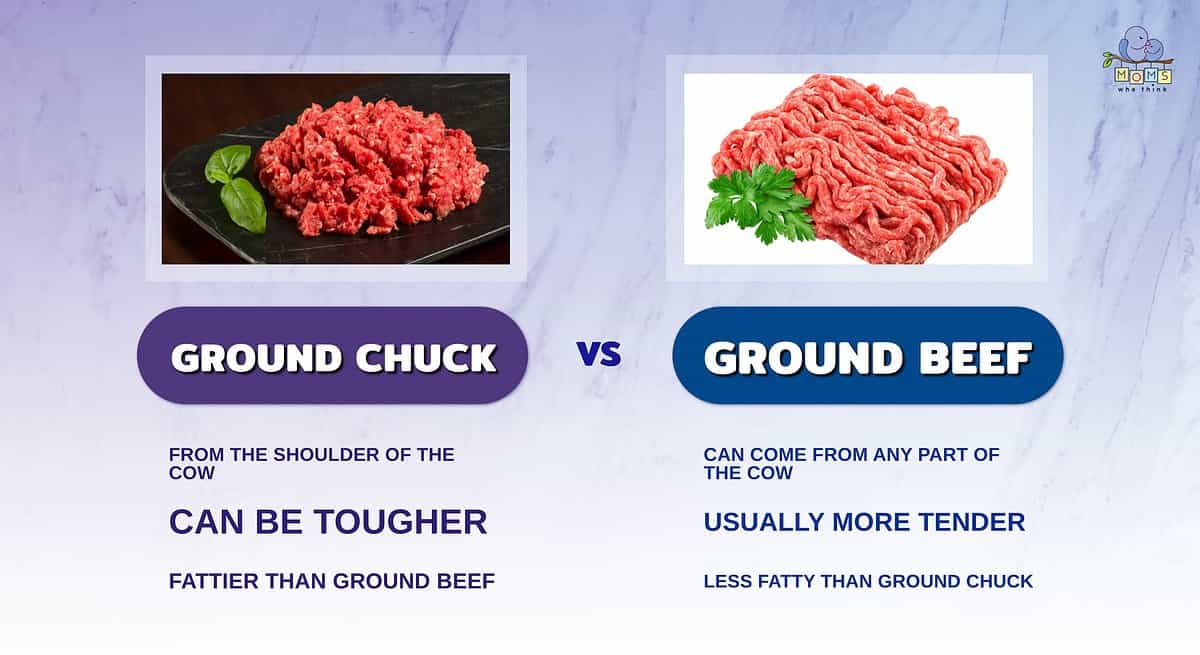
Ground chuck comes from a specific part of the cow, the shoulder, while ground beef can come from any part of the cow. Since chuck tends to be a tougher part of the cow, it is usually ground up to make it easier to consume. Ground chuck tends to be higher in fat than ground beef; make sure you read the labels carefully!
Haven't yet found a recipe you love? We've got one more for you to take a look at:
Print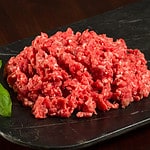
Skillet Ground Beef and Potatoes
Ingredients
1 pound lean ground beef
½ cup chopped onion
3 cups frozen diced potatoes, thawed
1 teaspoon garlic salt
1 can (14.5 ounce) Italian diced tomatoes
Instructions
1. In a large skillet set on medium heat, brown the ground beef with the chopped onion. Drain.
2. Add diced potatoes and garlic salt to skillet, stir well to combine.
3. Cook for 8 to 10 minutes (uncovered) or until potatoes are tender.
4. Add diced tomatoes, mixing well with beef and potatoes.
5. Cook an additional minute or two until tomatoes are heated through.
The image featured at the top of this post is ©grey_and/Shutterstock.com.
